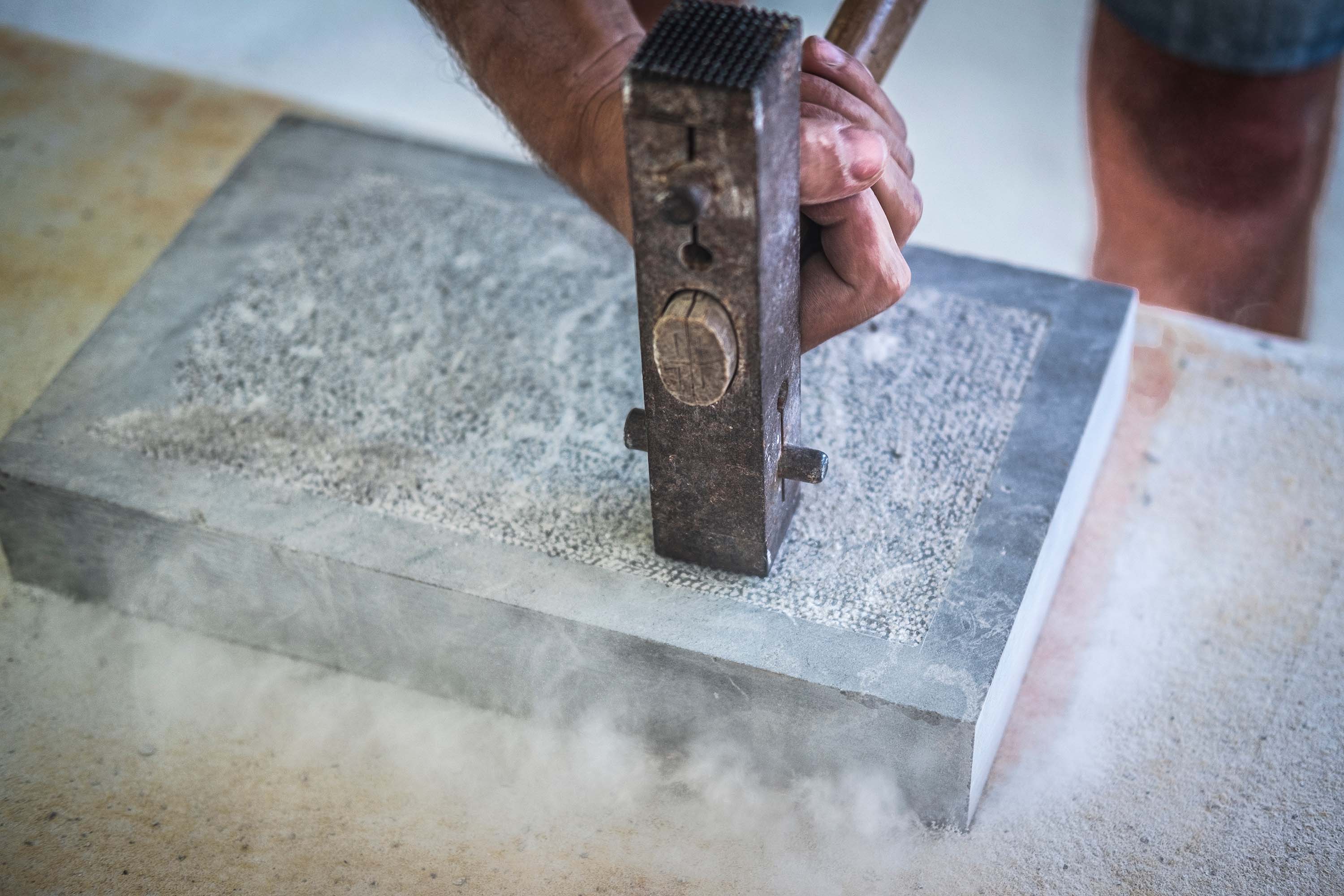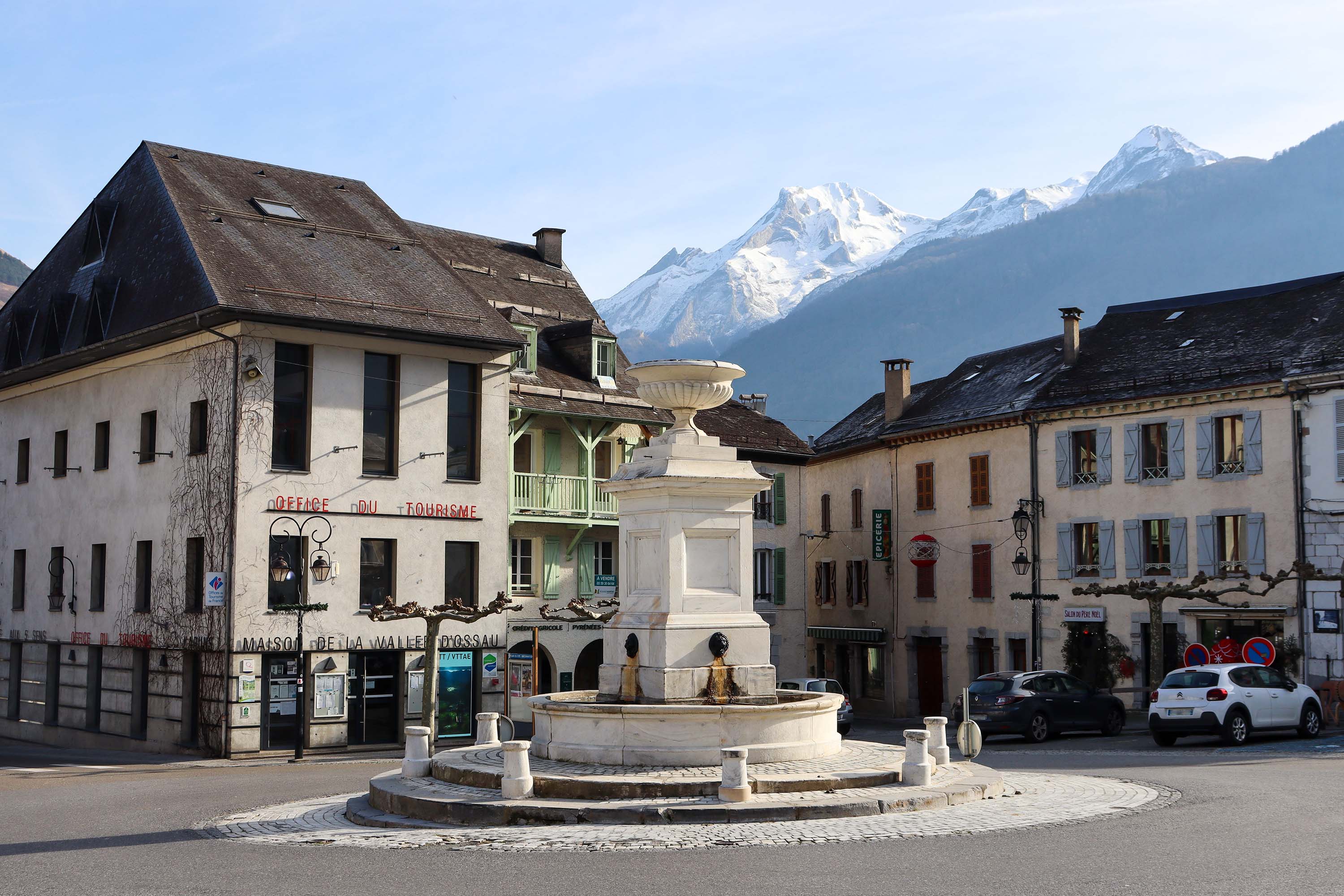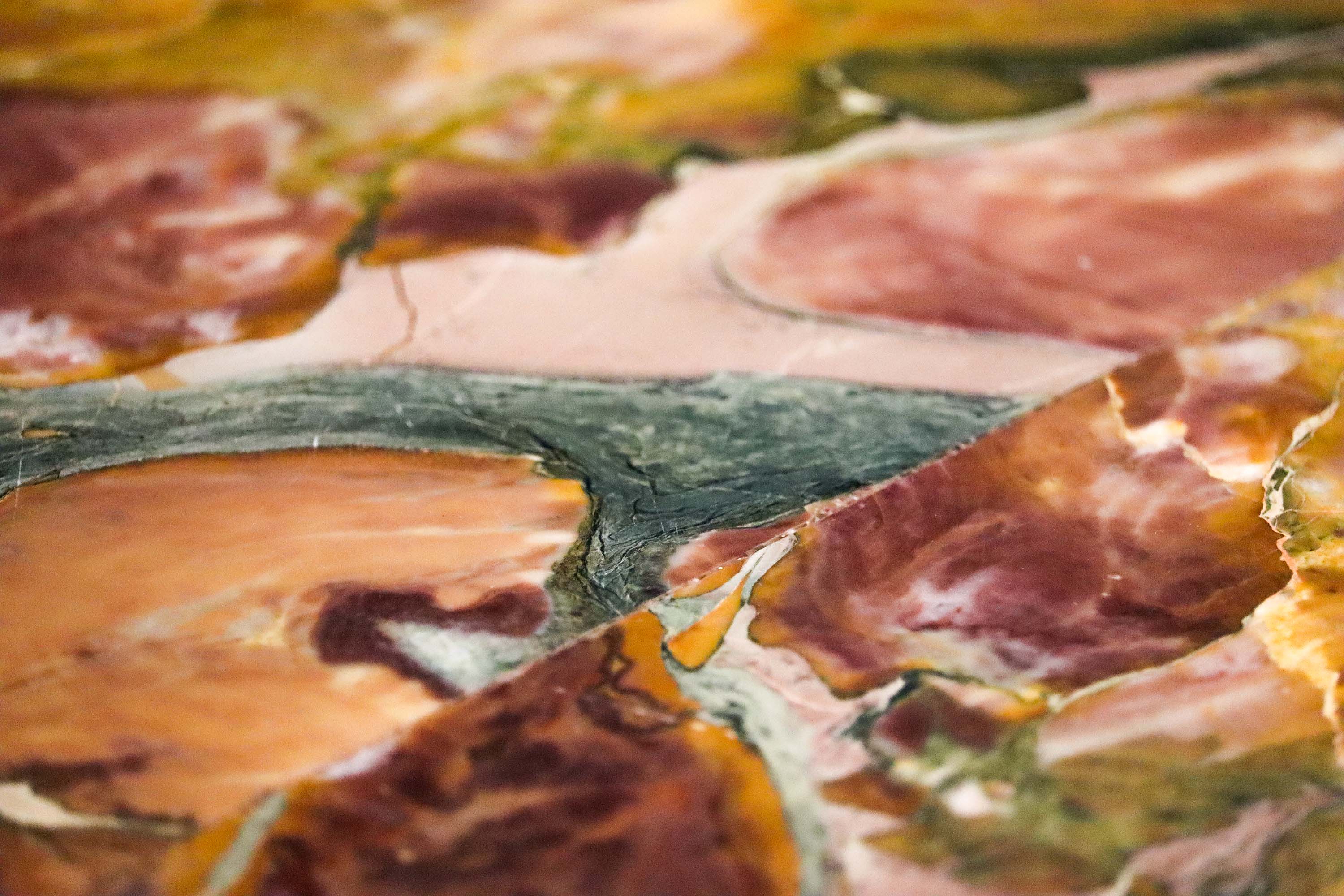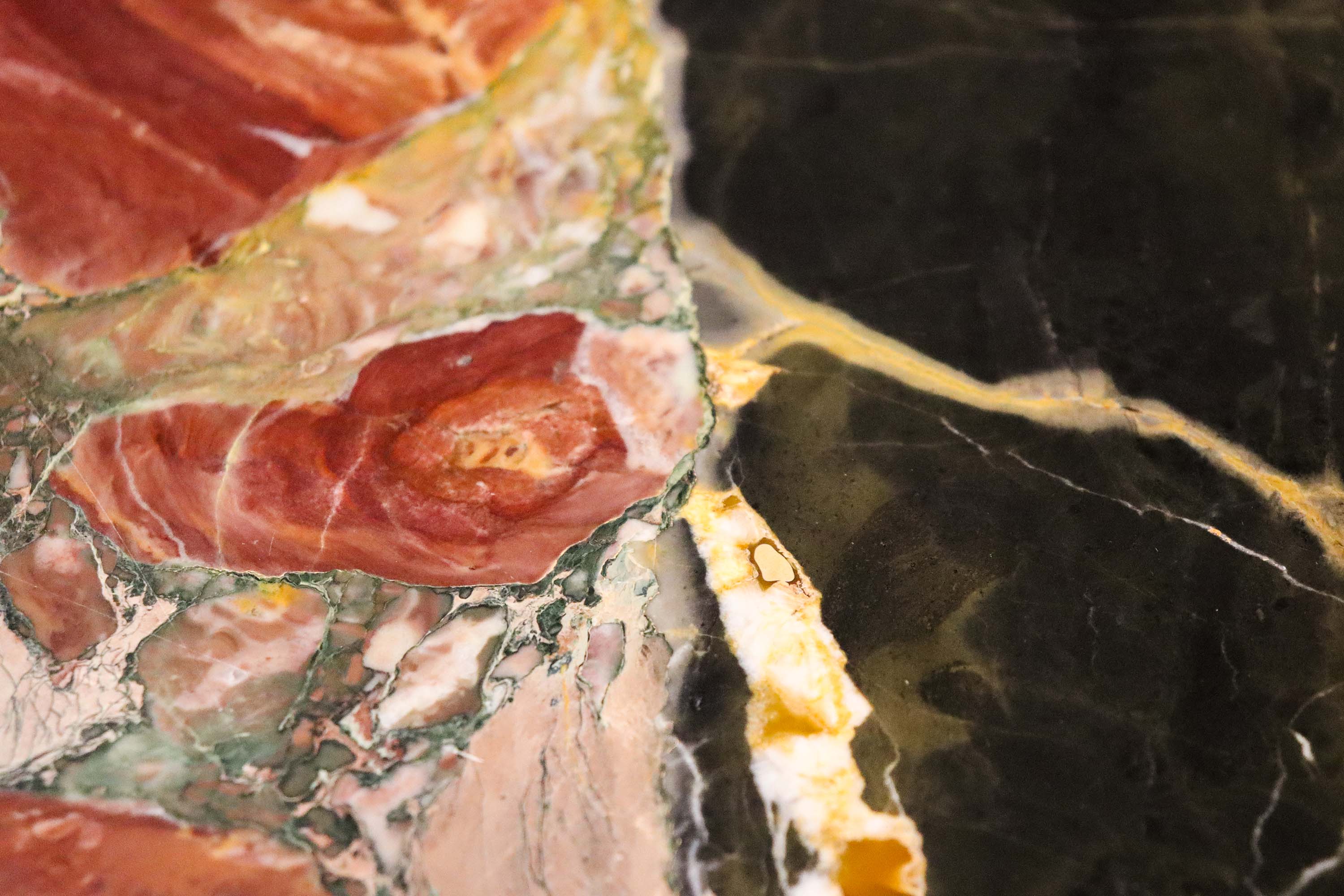The history of marble in the Ossau Valley The Arudy stone
The reason people talk about the ‘Pierre d'Arudy’ rather than the ‘Arudy marble’ is that, unlike the renowned metamorphic rocks from the nearby quarries, the Arudy stone is not a marble, but a marble limestone. It is in fact a rock with a very specific geological formation: a ‘Mud Mound’. Mud mounds are made up of a bacterial veil that allows them to harden rapidly. Their massive appearance gives them the ability to ‘take the polish’, which is why Arudy stone takes on the characteristics of marble once polished. The Carrières Laplace company is the last operator of the 3 marble limestone extraction sites in the Vallée d’Ossau. Resistant, dense and aesthetically pleasing, the grey stone from Arudy is renowned for its quality and is used for a variety of purposes: architecture (bush-hammered lintels, door and window frames), street furniture (fountains, staircases, benches), sculpture (works produced for the Biennales de la Pierre in 2017-2022), etc. To discover Arudy stone in all its forms, simply stroll through the streets of the eponymous village, a veritable open-air museum. Passing through the Place de l'Hôtel de Ville, take time to appreciate the aesthetics of the monument to the dead, for example. Built in 1922 as a tribute to the people of Arudy who died in the 1914-1918 war, the monument was fashioned from Arudy stone and restored by the Arudy stone-cutting firm Moncayola, and in its entirety it reflects the symbolism of the famous local slogan ‘Arudy, a soul carved in stone’. Exported to Belgium, Germany, Japan and the United States, Arudy stone is as popular locally as it is abroad. It can be found on the Empire State Building in New York, the Council of State in the Netherlands and the Opéra Garnier in Paris. In order to protect the ‘Pierre d'Arudy’ appellation, highlight its heritage dimension, and ward off counterfeiting, quarrymen and processors have joined forces to obtain the PGI label in 2020. A 34-tonne boulder that stands at the entrance to the village clearly illustrates the importance of the Arudy stone identity.
Statuary marble from Louvie-Soubiron
Two types of marble were fashioned from the rock in the Louvie-Soubiron quarries: ‘bleu turquin’ (veined with grey and blue) and the famous ‘statuary white marble from Louvie-Soubiron’ (pure white). The latter, as its name suggests, was mainly used to make statues and ornaments. The statue of Henry IV by Nicolas Raggi (Place Royale, Pau), ‘Cincinnatus’ by Denis Foyatier (Jardin des Tuileries, Paris) and ‘Talma meditating on the role of Sylla’ by David d'Angers (Comédie-Française collection) all bear witness to the major contribution made by Louvie-Soubiron statuary marble to French sculpture. This noble material was also used for more practical purposes locally, such as the threshold of a farm building in the valley, the frame of a barn opening, a village wash-house, etc. White marble from Louvie-Soubiron can also be found in the valley on various sculpted decorative elements, such as the stoup in Saint-Pierre church in Laruns or the fountain in the village square: The purity of the white echoes the purity of the water (holy water, drinking water from the fountain, spring water drawn from the thermal baths in the villages a little higher up).
Exploitation of the Louvie-Soubiron quarries came to an end in the mid-19th century, due to the difficulties of accessing the sites and the lack of a sufficiently solid footbridge to carry the blocks of stone to the other side of the Gave. This was the original purpose of the masonry bridge at Béost, but its construction was completed once the quarries were abandoned. Today, a 3km interpretation trail above the village of Louvie-Soubiron invites visitors to discover the characteristics of this marble and the history of its quarrying. Benou Breach
Quarried from the 17th century onwards, the Bénou quarry produces a unique polychrome marble: the Brèche de Bénou. Breccias are a category of marble formed from large elements that appeared at the time of the stone's geological formation: pressure and distortion in a tropical climate created a marble composed of a whole variety of colours. Tinged with dark purple, emerald green, golden yellow, pink and black, the Brèche de Bénou - as described by the concession's current owners - is reminiscent of Gustave Klimt's famous paintings. Used throughout the world, particularly for furniture and fireplace surrounds, it can be found in the Vallée d’Ossau on the fountain at Arudy (a combination of grey polished stone from Arudy and marble from Bénou), or on the remarkable gift presented to the Bilhères en Ossau Town Hall in 1996 by the then operator, the famous Italian marble-maker Luigi Antolini (a concession formerly supervised by ‘Les Nouvelles Carrières du Béarn’).
Not used for several years, the Bénou quarry was recently taken over by the Italian company Escavamar SRL, a veritable treasure trove of abandoned nuggets (including the exclusive right to extract Grand Antique d'Aubert from the Ariege mountains: an extraordinary black and white marble that had disappeared from the market since the Second World War). Since May 2023, blocks of Brèche du Bénou have been travelling the world again. 


